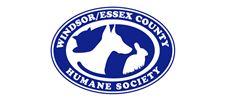Session K: Watching, wearing, eating: The ethics of wildlife tourism, wool, and mutton
Sub-theme
Research and Theory
Keywords
farmers; Falkland Islands; sheep; penguins
Start Date
13-10-2018 10:30 AM
End Date
13-10-2018 11:45 AM
Abstract
Animals are used by humans for a wide range of purposes including entertainment, clothing, and food. Among these purposes there are specific products and practices that are targeted as well beyond accepted ethical boundaries, such as marine mammal parks, fur coats, and foie gras. More broadly accepted practices that compromise the welfare of animals for human benefit include animal testing in medical research and the production of meat in intensive livestock operations. Increased negative responses from the public have led to niche markets within these three sectors (entertainment, clothing, and food), with a higher prioritization of animal welfare. (1) Wildlife tourism is a burgeoning industry centred on observing animals in their natural habitat, as opposed to viewing them in captivity. (2) Ethical wool made by companies adopting rules like the Responsible Wool Standard (RWS) has developed in response to public outcry around practices like mulesing—the removal of extra skin around the rear of a sheep. (3) Humane meat is a niche market that uses a third-party certification process that verifies certain standards for animal treatment. In these three sectors, farmers and consumers justify the utilization of animals in circumstances wherein a certain degree of ‘naturalness’ is achieved. Here, power dynamics between humans and animals are masked by what Colter Ellis calls a symbiotic ideology. Farmers interact directly with animals, making their perceptions and motivations for improved animal welfare practices particularly important. In this presentation, we explore the social construction of animal ethics among farmers embedded in contexts of sheep farming, including wool and meat production, as well as wildlife tourism. The Falkland Islands is used as a case example where wildlife tourism, wool production, and sustainable livestock operations co-exist.
Session K: Watching, wearing, eating: The ethics of wildlife tourism, wool, and mutton
Animals are used by humans for a wide range of purposes including entertainment, clothing, and food. Among these purposes there are specific products and practices that are targeted as well beyond accepted ethical boundaries, such as marine mammal parks, fur coats, and foie gras. More broadly accepted practices that compromise the welfare of animals for human benefit include animal testing in medical research and the production of meat in intensive livestock operations. Increased negative responses from the public have led to niche markets within these three sectors (entertainment, clothing, and food), with a higher prioritization of animal welfare. (1) Wildlife tourism is a burgeoning industry centred on observing animals in their natural habitat, as opposed to viewing them in captivity. (2) Ethical wool made by companies adopting rules like the Responsible Wool Standard (RWS) has developed in response to public outcry around practices like mulesing—the removal of extra skin around the rear of a sheep. (3) Humane meat is a niche market that uses a third-party certification process that verifies certain standards for animal treatment. In these three sectors, farmers and consumers justify the utilization of animals in circumstances wherein a certain degree of ‘naturalness’ is achieved. Here, power dynamics between humans and animals are masked by what Colter Ellis calls a symbiotic ideology. Farmers interact directly with animals, making their perceptions and motivations for improved animal welfare practices particularly important. In this presentation, we explore the social construction of animal ethics among farmers embedded in contexts of sheep farming, including wool and meat production, as well as wildlife tourism. The Falkland Islands is used as a case example where wildlife tourism, wool production, and sustainable livestock operations co-exist.




